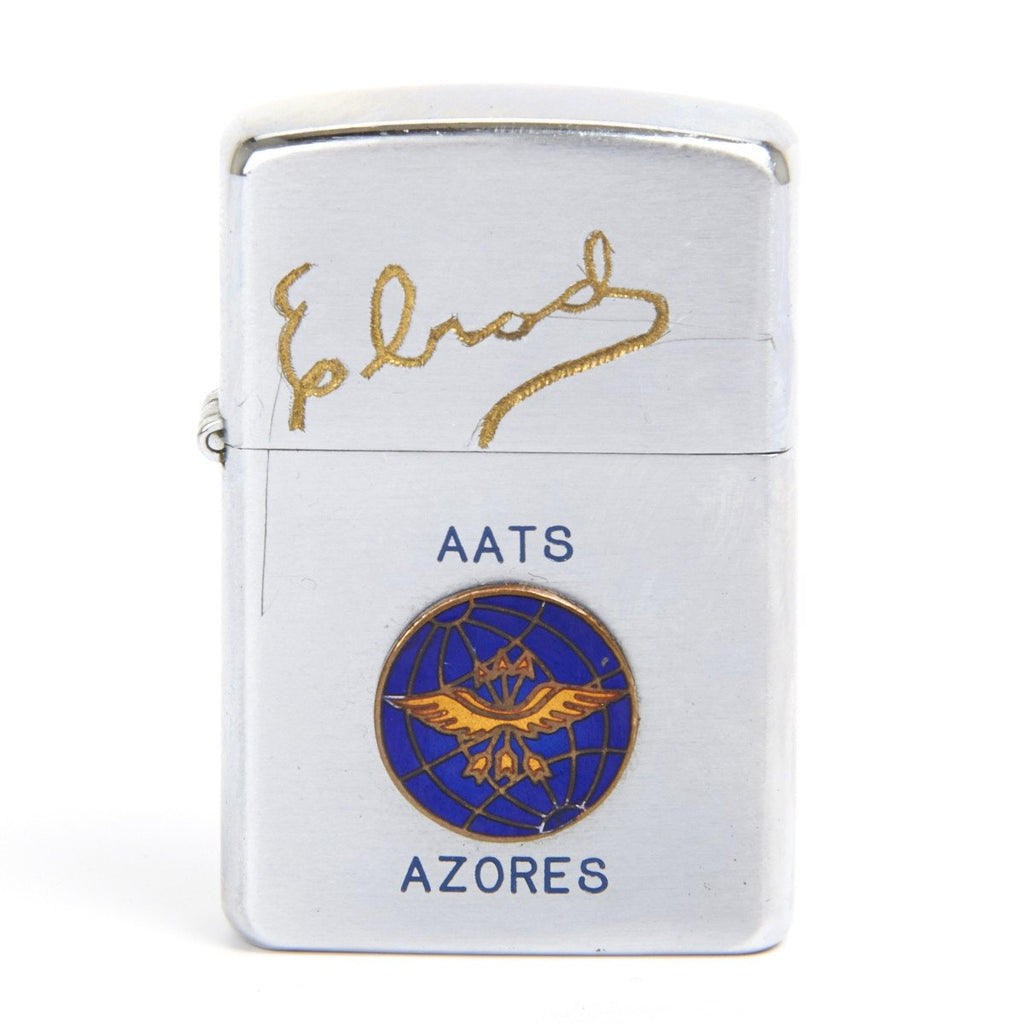Item Description
Original Item: Lighters could be customized with regimental cyphers and engravings, and were purchased by GIs returning home as a memento of their military service in the specific theatre of operation.
Excellent vintage ZIPPO style windproof lighter circa 1969 made by PENGUIN of Japan.
During World War II, the designation of the airfield was changed to Air Base No.4 and the Portuguese government expanded the runway, sending troops and equipment to Terceira, including Gloster Gladiator fighters. The military activities in the Azores grew in 1942, as the Gladiators began to be used to support allied convoys, in reconnaissance missions and on meteorological flights. In addition, the first Portuguese Junkers Ju 52 arrived in July 1942 to fly cargo missions.
A Vickers Wellington Mk XIV, No. 172 Squadron RAF undergoing servicing at Lagens airfield during 1944
By 1943, the British and American armed forces were allowed basing rights in Portugal, and the Royal Air Force took over Lajes Field as RAF Station Lajes. The Azores permitted British and American airplanes to protect Allied shipping in the mid-Atlantic.
On 1 December 1943, British and U.S. military representatives at RAF Lages Field signed a joint agreement outlining the roles and responsibilities for the United States Army Air Forces (USAAF) and United States Navy (USN) at Lajes Field.[2] The agreement established guidelines and limitations for the ferrying of aircraft and the transport aircraft to Europe via Lajes Field. In return, the US agreed to assist the British in improving and extending existing facilities at Lajes. Air Transport Command transport planes began landing at Lajes Field immediately after the agreement was signed. By the end of June 1944, more than 1,900 American airplanes had passed through this Azorean base. Using Lajes Field, the flying time relative to the usual transatlantic route between Brazil and West Africa was nearly cut in half from 70 to 40 hours.
Lajes Air Base Diagram
Lajes Field was one of the two stopover and refueling bases for the first transatlantic crossing of non-rigid airships (blimps) in 1944. The USN sent six Goodyear-built K-ships from Naval Air Station South Weymouth in Massachusetts to their first stopover base at Naval Station Argentia, Newfoundland and then on to Lajes Field in the Azores before flying to their final destination at Port Lyautey (Kenitra), French Morocco. From their base with Fleet Air Wing 15 at Port Lyautey, the blimps of USN Blimp Squadron 14 (ZP-14 or Blimpron 14) conducted night-time anti-submarine warfare (ASW) to search for German U-boats around the Strait of Gibraltar using magnetic anomaly detection (MAD). In 1945, two ZP-14 replacement blimps were sent from Weeksville, North Carolina to the Bermudas and Lajes before going on to Craw Field (Kenitra Air Base) at Port Lyautey.
- This product is available for international shipping.
- Eligible for all payments - Visa, Mastercard, Discover, AMEX, Paypal & Sezzle








